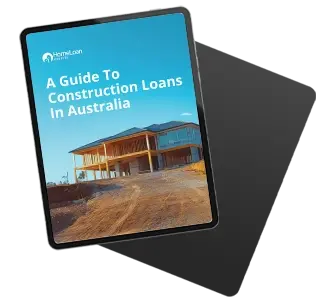Not sure if you can show rental income yet because your investment property isn’t built yet? Well, you can but there are some caveats.
And in this article, we are going to cover exactly how you can do it. So, let’s get started.
What is Future Rental Income?
Future rental income is basically an estimate of your property’s rental earnings once the construction is complete.
A lot of lenders accept up to 80% of this income when they assess your borrowing power. So, for most investors, this can be a game-changer if you want to maximise your borrowing power.
On the other hand, some lenders will use the lower amount between your rental appraisal and their own ‘on-completion’ rental estimate. Others may only accept rental income that you’re currently earning.
If you’re building or planning to build on vacant land, it’s worth speaking to an expert. Call us on 1300 889 743 or complete our online enquiry form and we’ll assess your full situation to let you know if you qualify for a construction loan.
Getting Approved For A Construction Loan in Australia
A full construction loan guide with common mistakes and how they can be avoided.

Disclaimer: Over the next few days, you’ll receive additional guides to help you on your homebuying journey. Occasionally, you’ll receive carefully curated home-buying tips, offers & schemes, and news articles. You can unsubscribe any time you want. View our Privacy Policy
Requirements For Using Future Rental Income
To use future rental income towards your loan application, you’ll need to provide:
- A fixed-price building contract with a licensed builder
- DA (Development Approval) and council-approved building plans
- A rental appraisal from a licensed real estate agent
Keep in mind: Most banks will use the lower of your agent’s estimate or their own internal rental assessment.
Let’s say your future property is estimated to rent for $606 per week.
The lender will likely accept 80%, or $485 per week, as assessable income when calculating how much you can borrow. That can significantly improve your debt-to-income ratio and help you qualify for a bigger loan, or better terms.
Off the Plan Property vs Under Construction
Lenders take future rental income for off the plan properties into account, specifically if the property settlement is in 3 months.
They may be, however, a bit more conservative with valuations if the market conditions aren’t too good or if there’s oversupply in certain areas.
You can check our off the plan page to improve your chances at loan approval and avoid any pitfalls.
Future Rental Income vs Rental Income From Existing Properties
When you’re applying for a loan, lenders can treat future rental income from a new build differently than income from an existing property.
With existing properties, rental income is easy to verify with a lease agreement or a rental history. But construction loans need your rental income to be estimated based on what the property could earn once it’s completed.
The good news? In many cases, rental yields for a newly-built property can actually be higher than those of comparable existing homes.
Why? Because new builds are often located in emerging growth suburbs, areas targeted for new infrastructure, schools, transport links, and community upgrades. These factors increase demand, which can push rents higher.
Building can also be more cost-effective than buying and renovating in established suburbs. While many investors chase properties in traditionally high-growth areas, looking beyond these can uncover better value and higher rental return potential, especially when your borrowing power can be boosted by estimated rental income.
You can also further increase your borrowing capacity by choosing a lender that will take negative earring benefits into account. Generally, this relates to the on completion value of the property and related purchasing costs including conveyancing, advertising and stamp duty.
Read more about negative gearing benefits here and speak with your accountant about what you can claim.
Future rental income vs rental income for existing property
Did you know that rental yields for a newly-built property can be higher than the rental returns on an existing property?
It all comes down to choosing new locations that are marked as growth suburbs, that is, locations that will benefit from new infrastructure, new, schools and community facilities, and other growth indicators.
By looking past affluent suburbs or locations with good historical growth, you may also find that it’s cheaper to build rather than buying existing real estate and renovating.
Spread your risk to keep investing
Each lender has their own investment lending requirements and mortgage exposure limit.
On top of that, mortgage insurers have their own risk appetites for certain properties and locations.
Professional investors find that the best solution is to spread their risk across multiple lenders as part of a well-executed mortgage strategy.
A good mortgage broker will help you to build this strategy so you can continue pursuing your investment goals.
Discover if you qualify for a loan
Call us on 1300 889 743 or fill in in our online enquiry form and we can let you know how much you can borrow for your investment property construction loan.
